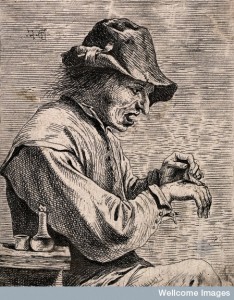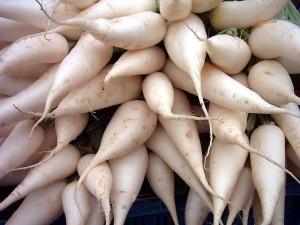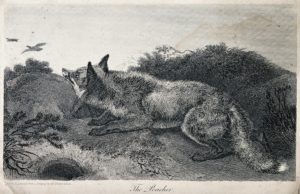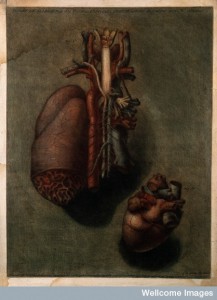
Martha Taylor: The Derbyshire Damsel
In the late 1600s, a young woman in the Derbyshire Peak District became a celebrity for a brief time. Martha Taylor, born in February 1651, was an adolescent who had a history of ill-health starting from when she was about ten years old. She became the subject of several pamphlets when she became so ill that she took to her bed and apparently survived without nourishment for over a year.1 There were two main themes to the write up this woman’s case attracted: one scientific/medical and one religious.
Martha was the daughter of a lead-miner called William Taylor and his wife who was thought to be of a higher social rank than her husband, and so was well educated, and she lived with her siblings in a cottage in Over-Haddon overlooking Haddon Hall. As the author of Mirabile Pecci H. A. took pains to tell his reader that although the home was humble ‘there is room enough for God to do great things in’ (p. 6). Martha’s childhood until the age of ten was unremarkable and H. A. noted that ‘her early blossoms did not predict sour grapes in an Autumn season’ (p. 6), or that there was no reason to suspect she would become a sickly teenager.

http://www.peakwalker.net/2007%20walks/2007-05-01.php
All that changed, when at the age of ten Martha was hit on her back by her neighbour, a miller. The reasons the neighbour struck the child are not clear but some thought it was just in fun. The result was that Martha experienced some lameness which in turn led to a generalised ‘indisposition’ (p. 7). By May 1662 Martha was bedridden and H. A.’s report assumed that she would remain so until she died. For several years Martha was troubled with ‘private bleedings, often sick, and seldome free from less or more of a Feaver’ (p. 8). In November 1667 Martha began
wonderful Bleedings at several external Parts, as at the Mouth, the Nose, the Ear, the Eye, from which part she did continually distill perfect Tears of blood, so that one would have thought Life would have Wept itself away out at the Eye (p. 9).
H. A. speculated that the cause of this bleeding might be the violent retching which would tear her blood vessels open, and the vomiting from the lack of exercise which stopped the corrupt humours from exiting the body. Normally women by Martha’s age would be expected to excrete these corrupt humours or ‘Corrupt Crudities, Nauseating Vapours, and Filthy Humours’ along with their menstrual blood, and another medical explanation of this ‘wonderful bleeding’ would be a kind of vicarious menstruation.2 As well as bleeding, Martha suffered from hiccoughs and a desire to pluck out her hair.
By December Martha had lost the power of speech and H. A. stated that this would have killed her had it not been for Divine Providence and God’s intervention in the case (p. 10). For the author, the condition was entirely caused by the Devil and his attempts to tempt Martha over to his side (p. 17). In the face of all her adversities, Martha remained of a ‘smiling grateful Countenance’ and was very lovely (p. 24).
Martha had by now stopped eating and the sight or smell of meat or drink agitated her. Sometimes she could be prevailed upon to sip a little sugared water or a drop of wine but even this was a struggle. News of her condition had got out and people would come to see her. Some would scoff and call her a cheat suggesting that she was secretly eating and drinking (p. 16). This is hardly surprising since her outward appearance remained ‘lovely’ and she was not ‘reduced to skin and bone’ in her face and upper body (p. 19). From the ribs downwards, however, Martha had wasted away. According to H. A. from the beginning of 1668 Martha had stopped urinating or passing stools.
While for H. A. Martha’s tale accorded with other religious martyrs’ sufferings, for John Reynolds, a more rational explanation was needed. Reynolds submitted his account of Martha’s story – with the events drawn from T. Robbins’s (a ballad maker) account of the story, rather than his own observations – to the Royal Society in London, dedicated to Dr Walter Needham in 1669. Reynolds claimed that Needham requested from him an account of ‘the so much fam’d prodigious Twelve Moneths Absinence of the Derby-shire Maid’ (p. 1). Much of Reynold’s account is an enquiry into the ways the human body could do without food for extended periods and is informed by the then current ferment theory of digestion. Reynolds did not directly address Martha’s story until page 33 of his treatise when he offered a two page summary of the main events, starting with the blow from the miller (‘Milner’, p. 33). Reynolds quoted Robbins and describes how
lest she should be proved a Cheat, she hath been diligently watch’d by Physicians, Surgeons, and other persons, for at least forty night together, by the appointment of the Noble Earl of Devon (p. 34).
From this account Reynolds concluded that Martha’s age (then 18) convinced him she was probably be suffering from a ferment in her ‘seminals’ (p. 35), and that her ‘antipathy to meat was not the promoter of the Tragedy, but an inability to swallow’. He considered that the small amount of liquid she could tolerate were enough to sustain her, aided by the fact she was not losing moisture through excretion. He even likened her to an embryo in that she retained her waste internally until after delivery. Reynolds also evidenced Martha’s lack of sleep as s good way for her to conserve her resources since sleep was considered to be the final stage of digestion. His eleventh reason for her sustaining life was because her bed was near the fire and so she received heat that way, and his final reason was the constant stream of visitors she received., as people from far and wide came to view this wonder.
While she was apparently alive in early 1669, the fate of Martha Taylor beyond this point is unknown. Local burial records show that a Martha Taylor, daughter of a John Taylor, was buried in June 1684, but since Martha’s father is given as William, then this is unlikely to be her.3
Further Reading
Catriona Albano, ‘Within the Frame: Self-Starvation and the Making of Culture’ in Framing and Imagining Disease in Cultural History , ed by G. Rousseau, M. Gill, D. Haycock, M. Herwig (Basingstoke: Palgrave, 2003), pp. 57-67
_______________
- Contemporary write-ups include T. Robbins, Newes from Derbyshire; or the Wonder of Wonders (1668); H. A. Mirabile Pecci: Or the Non-Such Wonder of the Peak in Derbyhire (1669); John Reynolds, A Discourse upon Prodigious Abstinence (1669).
- Helen King, Hippocrates’ Woman: Reading the Female Body in Ancient Greece (New York: Routledge, 1998), p. 73.
- http://www.peaklandheritage.org.uk/index.asp?peakkey=41304021




